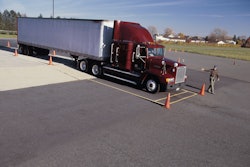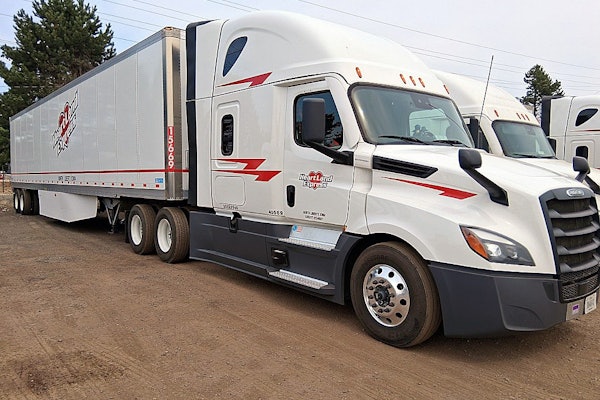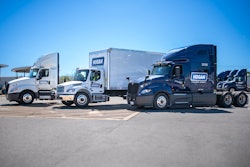It’s now 2025, which means I’ve officially been designing and building learning management systems (LMS) for 25 years. Much has changed in that time, and technology and the Internet have allowed us to develop online training tools we wouldn’t have imagined in the early 2000s.
When we launched CarriersEdge in 2005, online training for trucking companies wasn’t a thing. While other blue and white collared industries were using online systems to help in their training and educational programs, the trucking industry did it the old-fashioned way by training employees in a classroom-type setting. While in-person training remains an essential piece of a comprehensive training program in trucking, the use of online training has become the norm among fleets as learning management has advanced and become more available in the industry.
In fact, while scoring the 2025 edition of the Best Fleet to Drive For, for the first time ever in the 17 years we’ve produced the program, online training was the default training method across participating fleets.
As fleets increasingly rely on online training activities, choosing the right online system to support your operation and its safety goals is essential. When you select an online training provider, you should demo or trial the service to see if what’s offered is easy for users to manage and what tools you can use to deliver training courses to your employees effectively. In trucking, a few industry-specific features you should look out for include:
Compliance and audit support
Support for compliance tracking and audits is critical in trucking. With multiple enforcement agencies and insurance reps regularly wanting to verify training records and history, fleets need to be able to pull up training records quickly. Those records need to be accurate, and they should be detailed as well.
While many blue-collar learning management systems track compliance – whether users are currently up to date with required training – trucking needs more than that. Fleets often need to show that drivers were compliant at specific points in the past or have never been out of compliance. That goes well beyond what’s available in most general-purpose LMS.
Dashcams and telematics integration
The base assumption for all types of online systems is that a human is deciding the training requirements for a given population of workers, but in trucking, that’s no longer the case. With telematics and dashcams highlighting gaps in driver skills and knowledge, machines are increasingly involved in the process, and fleets need ways to integrate them easily.
A trucking LMS must recognize that human administrators and outside systems will be identifying training needs. There also needs to be ways for fleets to get both groups working together towards the same goal. Auto-assigning training is necessary, but the human managers need to be in the loop, so they always know what’s happening.
Managing driver options
It’s not uncommon for drivers to get moved from one fleet manager to another as their routes change. Most learning management systems assume workers are fairly static in their locations and roles, so they have minimal features to streamline the process of making changes.
To effectively serve the trucking industry, online systems need to make it easy to change not only manager and location assignments but also training requirements. If a driver moves from one customer to another or moves from regional to local or cross-border work, the types of training they need will change, too. The online system needs to handle that and automatically update the assignments consistently and reliably.
Driver turnover management
All blue-collar environments have employee turnover to deal with, but trucking is unique because a significant percentage of those exits often return at some point in the future. Fleets commonly delete accounts when drivers leave, but when those people return, it’s better to have the old account saved rather than having to create a brand new one.
Since that driver likely completed training during the previous employment, that history should come back, too. Forcing every returning driver to go through all the training they’ve already completed again because the previous history got wiped when they left, is a waste of time.
A trucking LMS needs to seamlessly handle drivers quitting and returning, making it easy to remove accounts when drivers leave, reactivate when they return, and retain all training history accurately to expedite onboarding.
Even if those drivers don’t return, that history may be needed in the future for lawsuits or when audits come up. It’s critical to keep it available but not clutter up the interface with records for people not currently employed at the fleet.
Drivers, safety and ops
Safety and operations teams often oversee drivers together. Ops teams may be responsible for the individual drivers (acting as the direct managers for them), but safety managers also play a role in overseeing safety programs and outlining what should be done to stay compliant and minimize the fleet’s risk profile. Learning management for trucking needs to recognize and support all three groups effectively. Safety managers may be the ones setting up the training programs and deciding when and what training drivers need to complete, but the operations team needs to be in the loop. They need to know what’s required of their drivers and when and what courses drivers are completing. The LMS needs to be easy for anyone to use so that all teams can see where drivers are at in their training, pull records, or input information when they need to without a lot of manual work.
Using an online system to help manage aspects of your overall safety program should make life easier as an administrator. If it’s too complex or doesn’t offer the right tools to more efficiently manage tasks, you’re using the wrong one. When deciding on which provider to use, make sure the capabilities offered will assist you in reaching your safety goals.














